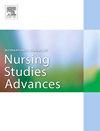The impact of a risk assessment tool on hospital pressure injury prevalence and prevention: a quantitative pre-post evaluation
IF 3.1
Q1 NURSING
International Journal of Nursing Studies Advances
Pub Date : 2025-05-01
DOI:10.1016/j.ijnsa.2025.100342
引用次数: 0
Abstract
Background
Pressure injuries are preventable adverse events, and their prevalence is established as a quality indicator in healthcare. They are a notable healthcare problem worldwide, as they have a significant impact on the quality of life of affected individuals and are associated with high costs for healthcare systems. The use of an evidence-based risk assessment instrument is, therefore, crucial to enable efficient, effective, and reliable assessments.
Objective
The evidence-based pressure injury risk assessment instrument PURPOSE T was widely introduced at a university hospital in 2021, replacing another commonly used assessment tool, the Modified Norton Scale. In this study, we quantified the prevalence of pressure injuries before and after the introduction of PURPOSE T to measure the tool’s impact.
Settings
At a university hospital in Sweden with about 900 beds.
Methods
We adopted a cross-sectional research design and analysed records from point prevalence measurements carried out between September 2018 and 2023. The number of patients included in each point prevalence measurement varied between 474 and 633. Prevalence of all pressure injuries and prescribed prevention interventions over a 5-year period was calculated, compared, and analysed.
Results
We observed notable increases in the use of preventive interventions, particularly pressure-reducing chair cushions (+28.6 %) and position adjustments in chairs (+24.2 %). Additionally, we found an average increase of +23.0 % in the prevalence of category I pressure injuries after the introduction of PURPOSE T while observing a decrease in most severe pressure injury categories:35.5 % in category III and -35.3 % in category IV.
Conclusions
We found that the introduction of PURPOSE T contributed to the increased use of preventive interventions. This, in turn, was associated with a decrease or modification in the prevalence of pressure injuries, suggesting a positive impact on pressure injury within this facility.
一种风险评估工具对医院压伤患病率和预防的影响:定量的前后评价
背景:压力损伤是可预防的不良事件,其患病率已被确立为医疗保健的质量指标。它们是世界范围内一个值得注意的卫生保健问题,因为它们对受影响个体的生活质量有重大影响,并与卫生保健系统的高成本有关。因此,使用循证风险评估工具对于实现高效、有效和可靠的评估至关重要。目的2021年在某大学医院广泛引入循证压力损伤风险评估工具T,取代另一种常用的评估工具改良诺顿量表。在本研究中,我们量化了引入PURPOSE T前后压力损伤的发生率,以衡量该工具的影响。这是瑞典的一所大学医院,有大约900张床位。方法采用横断面研究设计,分析2018年9月至2023年9月进行的点患病率测量记录。每个点患病率测量中包括的患者数量在474到633之间。计算、比较和分析5年期间所有压力损伤和规定预防干预措施的患病率。结果我们观察到预防性干预措施的使用显著增加,特别是减压椅垫(+ 28.6%)和椅子位置调整(+ 24.2%)。此外,我们发现引入PURPOSE T后,I类压力损伤的发生率平均增加了23.0%,而大多数严重压力损伤的发生率则下降了:III类为35.5%,iv类为35.3%。结论我们发现引入PURPOSE T有助于增加预防性干预措施的使用。反过来,这与压力损伤发生率的降低或改变有关,表明在该设施内对压力损伤有积极影响。
本文章由计算机程序翻译,如有差异,请以英文原文为准。
求助全文
约1分钟内获得全文
求助全文
来源期刊

International Journal of Nursing Studies Advances
Nursing-General Nursing
CiteScore
5.80
自引率
0.00%
发文量
45
审稿时长
81 days
 求助内容:
求助内容: 应助结果提醒方式:
应助结果提醒方式:


